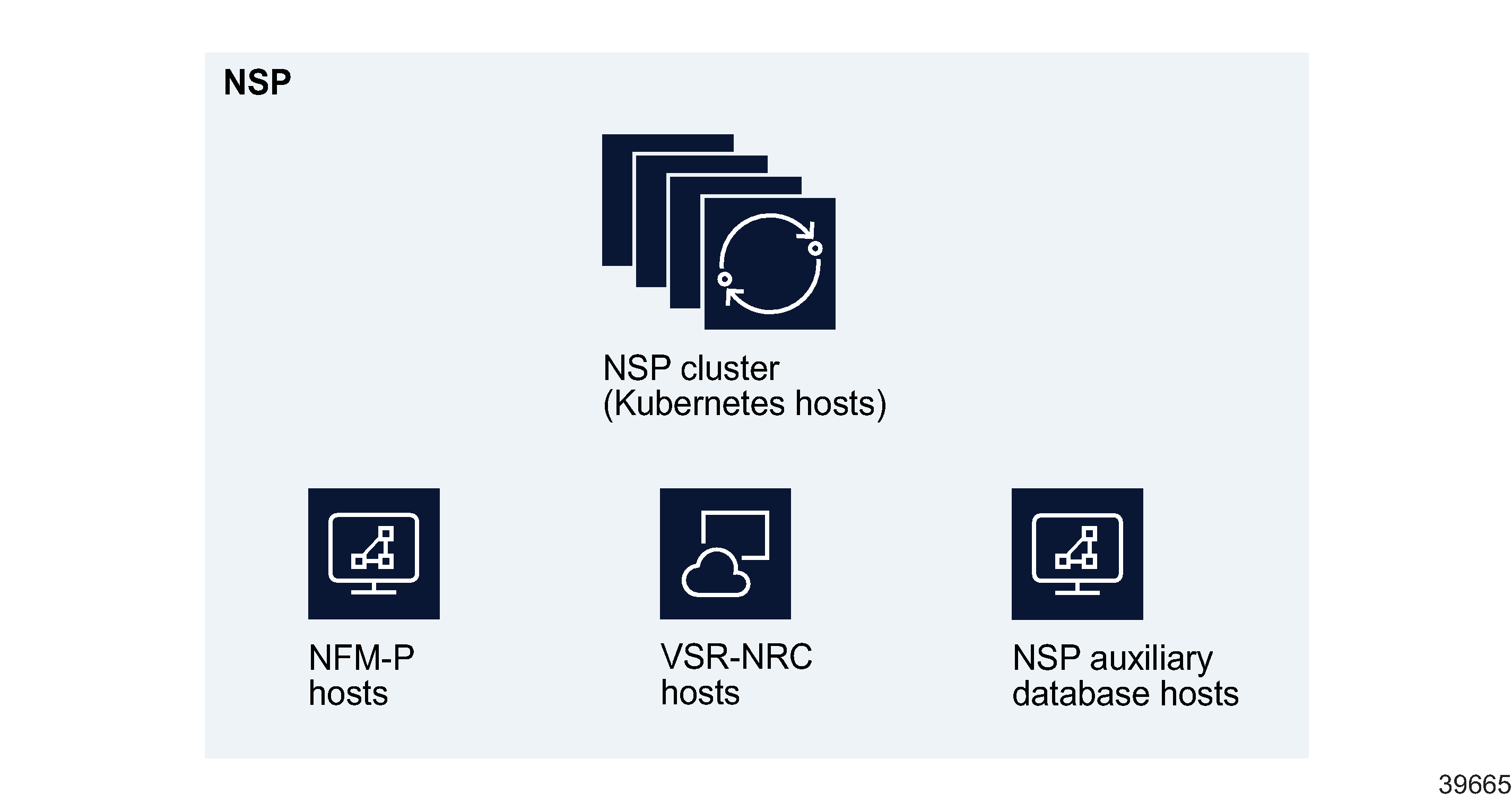Overview
Introduction
The NSP is a highly distributed system that requires a number of hosts, where a host is defined as a physical or virtual processing entity that has a discrete OS instance. The functions provided by the NSP software are installed on the NSP hosts, which collectively constitute an NSP deployment.
Many different NSP deployment scenarios that employ various levels of redundancy are supported; see Chapter 8, System redundancy and fault tolerance, the NSP Planning Guide, and the NSP Installation and Upgrade Guide information.
Deployable NSP platform elements
The core elements of the NSP platform are deployed in a Kubernetes container environment that Nokia provides. Other components of an NSP system are deployed outside the Kubernetes environment.
The following elements, which are described in subsequent topics, comprise an NSP system:
-
NSP cluster—group of containerized VMs managed by a Kubernetes orchestration layer that co-ordinates the deployment of NSP system services
-
depending on the system requirements, one or more of the following, which are deployed outside the Kubernetes environment:
The following figure shows a high-level conceptual diagram of an NSP deployment. A component in the diagram may require one or multiple hosts.
